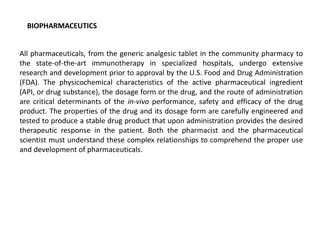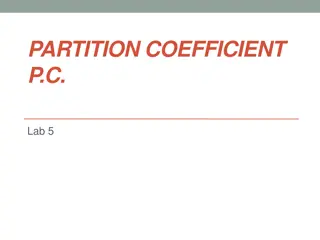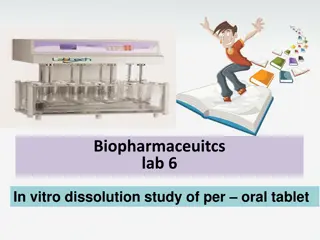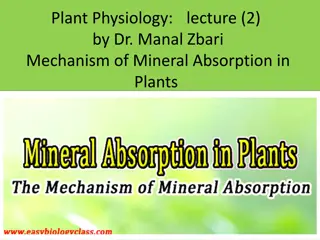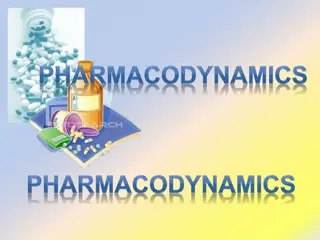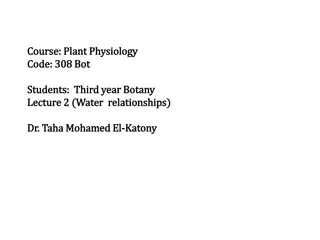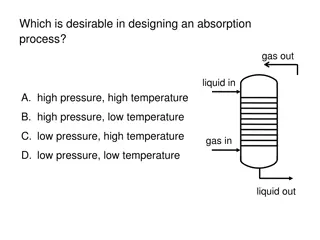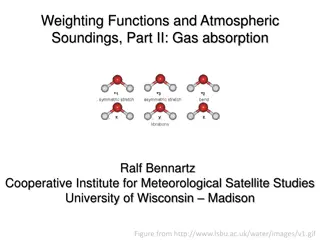Understanding Biopharmaceutics: pH Partition Theory and Drug Absorption
Biopharmaceutics explores how drug properties and administration methods impact drug absorption. Factors affecting oral absorption include membrane physiology and drug partitioning based on pH levels. The pH partition theory, explained by Brodie et al., highlights the role of drug lipid solubility and pH in absorption processes.
Download Presentation

Please find below an Image/Link to download the presentation.
The content on the website is provided AS IS for your information and personal use only. It may not be sold, licensed, or shared on other websites without obtaining consent from the author. Download presentation by click this link. If you encounter any issues during the download, it is possible that the publisher has removed the file from their server.
E N D
Presentation Transcript
pH partition theory and its limitations Dr. Kalpana School of Pharmaceutical sciences, CSJMU (22/4/22)
WHAT IS BIOPHARMACEUTICS? Biopharmaceutics can be defined as the study of how the physicochemical properties of drugs,dosage forms androutes of administration affect the rate and extent of drug absorption. Bioavailability is therefore defined as:the rate and extent of drug absorption If a drug is given intravenously it is administered directly into the blood, and therefore we can be sure that all the drug reaches the systemic circulation.The drug is therefore said to be 100% bioavailable.All other routes of administration where a systemic action is required, involve the absorption of the drug into the blood
Physiological Factors Affecting Oral Absorption A- Membrane physiology B- Passage of drugs across membranes Active transport Facilitated diffusion Passive diffusion Pinocytosis Pore transport Ion pair formation
Membrane physiology Membrane structure (Fluid Mosaic Model) The biologic membrane consists mainly of a lipid bilayer containing primarily phospholipids and cholesterol, with imbedded proteins.The membrane contains also small aqueous channels or pores. Phospholipid Bilayers Phospholipids are amphiphilic in nature. Polar heads are oriented toward the water and the fatty acid tails are oriented toward the inside of the bilayer.The fatty acid tails are flexible, causing the lipid bilayer to be flexible. At body temperature, membranes are a liquid with a consistency that is similar to cooking oil.
Drug absorption: It is defined as process of movement of unchanged drug from site of administration to systemic circulation. Factors inflencing GI absorption of a drug from its dosage form Classified into two types a) Pharmaceutical factors b) Patient related factors
pH partition hypothesis explained by Brodie et al The process of absorption is governed by : a) The dissociation constant of the drug b) B) The lipid solubility of unionized drugs c) pH at absorption site The hypothesis was based on assumptions that : a) The GIT is a simple lipoidal barrier to the b) transport of drug c) Greater the lipophilicity ( ko/w) of unionized drug, faster is absorption d) Larger the fraction of unionized drug , faster is the absorption
Drug pKa and GIT pH Weak acid : pH =pka +log ( ionized dug conc/ unionized drug conc) Weak base : pH =pKa + log ( unionized drug conc/ionized drug conc.)
For weak acid : a) Very weak acid( pka > 8) : Their absorption is rapid and independent of GI pH They are un ionized in entire pH range of GIT. a) Acid pKa ( 2.5-7.5): These are pH dependent . Better absorbed infrom acidic pH as largely exist in unionized form. c) Strongly acids pKa< 2.5: They are ionized in entire pH range of GIT. pH independent drugs.
Limitations of pH partition Hypothesis Presence of virtual membrane pH. Absorption of ionized drugs Influence of GI surface area and residence time of drug. Presence of aqueous unstirred diffusion layer


